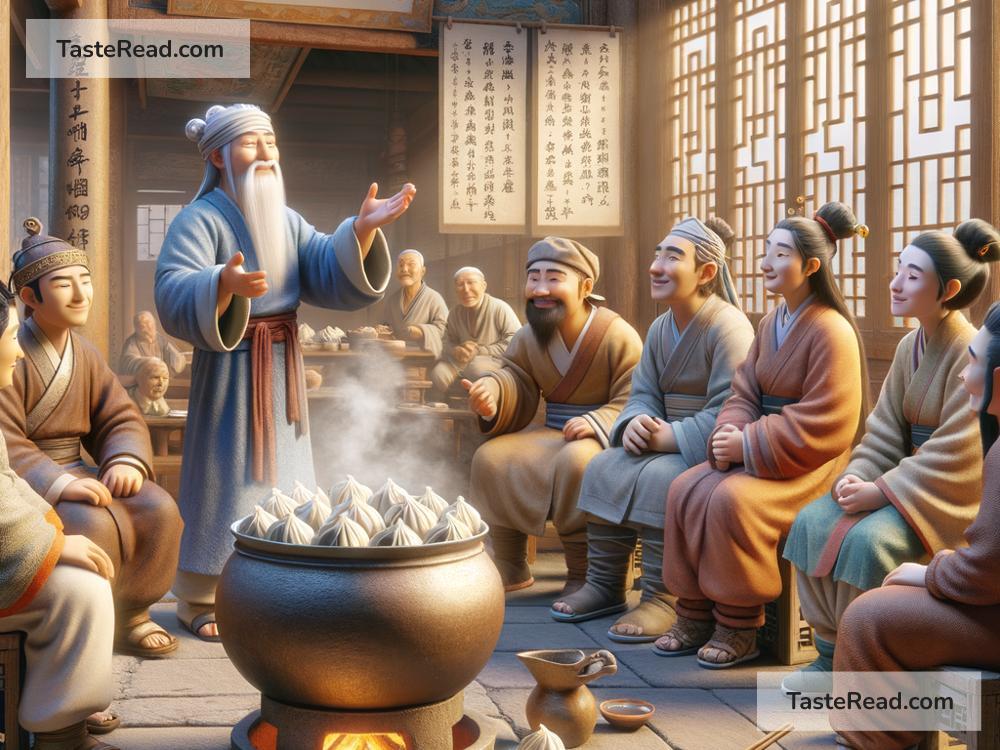The Origins of the First Dumpling: An Ancient Tale
Dumplings are loved around the world, from Chinese dim sum to Polish pierogi. These delicious little pockets of dough, stuffed with flavorful fillings, have been a cornerstone of cuisines for centuries. But where did the very first dumpling come from? While the exact history is unclear, there are ancient stories and legends that speak to the origin of this beloved food. Let’s take a journey back in time to explore the tale of the first dumpling.
The Legend of Zhang Zhongjing
One of the most famous stories about dumplings comes from ancient China. Zhang Zhongjing, a respected doctor during the Eastern Han Dynasty (around 150–219 AD), is often credited with inventing the dumpling. He wasn’t just known for his medical knowledge but also for his kindness and creativity in helping people.
The story goes that one bitterly cold winter, Zhang Zhongjing returned to his hometown after many years spent studying and working. He noticed that many people were suffering from frostbite, especially on their ears. Their bodies were weak from the cold and hunger, and their ears were swollen and raw from exposure to the icy winds.
Wanting to help, Zhang Zhongjing came up with a brilliant idea. He made a special dish to warm people up and restore their health. He combined finely chopped lamb meat with medicinal herbs and spices, wrapped them in a thin, doughy skin, and shaped them to look like little ears. These were boiled and served in hot broth, providing warmth, nutrition, and healing to his people.
This original dumpling was called “jiaozi,” and it quickly became popular. Not only did it keep his patients warm and healthy, but it also brought comfort during the harsh winter months. Over time, jiaozi evolved into what we now recognize as dumplings, remaining a celebrated dish in Chinese culture to this day.
The Dumpling’s Journey Across the World
While Zhang Zhongjing’s story is often seen as the origin of dumplings in Chinese tradition, the concept of wrapping food in dough existed in other cultures too. Although it’s hard to say when or where the very first dumpling was invented, it’s clear that similar ideas emerged independently in different parts of the world.
In ancient Rome, there are records of something resembling a dumpling. Roman cooks would wrap meat, fish, or vegetables in dough, sometimes boiling or frying the result. These early Roman dumplings weren’t quite the same as those we see today but showed that humans were experimenting with filling and folding dough in creative ways.
Meanwhile, in the Middle East, early forms of stuffed bread or pastry, such as samosas, showed similar thinking. In Northern Europe, people made dumplings by using flour, water, and eggs to create dough balls that were often boiled in soups or stews.
What ties all these dumpling-like creations together is a simple idea: food wrapped in dough is delicious, practical, and nourishing. Dumplings are a way to combine flavors, preserve ingredients, and create a portable meal. This universal appeal is why dumplings took root in so many cultures and evolved in countless ways.
Dumplings: A Symbol of Unity and Prosperity
Beyond their practical use, dumplings hold symbolic meaning in many cultures. In China, jiaozi are traditionally eaten during Lunar New Year celebrations. Their shape resembles gold ingots, an ancient form of currency, making them a symbol of wealth and good fortune. Families gather to make and eat dumplings together, sharing hopes for prosperity and happiness in the year ahead.
In other parts of the world, dumplings are also associated with gathering and joy. Whether it’s Polish families making pierogi for Christmas, Japanese chefs crafting gyoza, or Indian cooks folding samosas, dumplings bring people together. The act of making dumplings—folding, shaping, and sealing them by hand—is often a labor of love shared among family and friends.
A Timeless Food for All
Thousands of years after Zhang Zhongjing made his first jiaozi, dumplings remain one of the most beloved foods on the planet. Today, dumplings come in countless shapes, sizes, and flavors. From steamed, boiled, or fried dumplings to those stuffed with meat, vegetables, or even sweet fillings, they showcase the creativity and diversity of human cuisine.
While the exact origin of the first dumpling may be lost to time, the story of Zhang Zhongjing reminds us how food can connect us. Dumplings started as a remedy for frostbite and hunger and grew into a global symbol of tradition, comfort, and unity. They are more than just a dish—they carry history, culture, and love in their doughy embrace.
So, the next time you bite into a dumpling, remember its incredible journey through history. It may seem small, but each bite holds centuries of stories, countless hands that made them, and shared moments around the table. Dumplings prove that even the simplest foods can have the richest histories.


